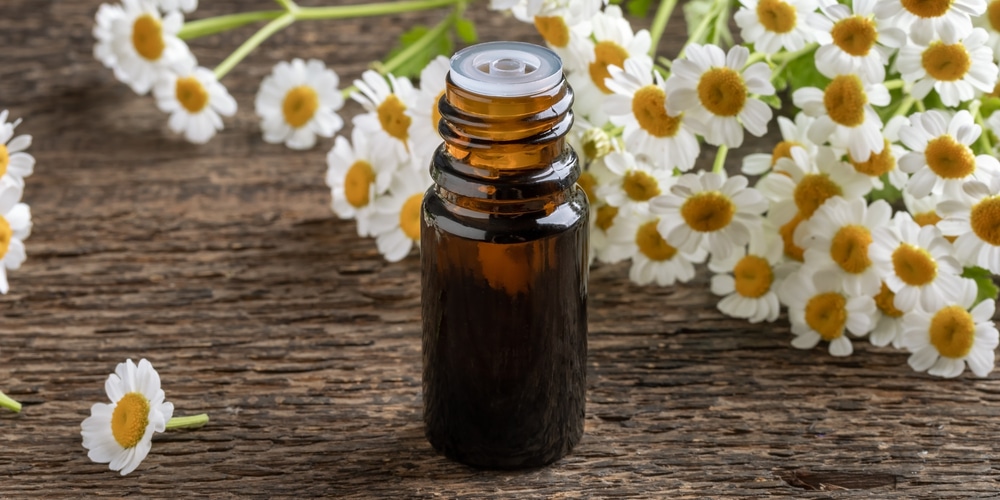Medicinal herbs have gone in and out of popularity throughout the years. Some have withstood the test of time, while others have fallen to the wayside. Two herbs that have remained popular are feverfew and chamomile. But what are the differences of feverfew vs chamomile.
These two are often compared side by side because they have similar properties. Both belonging to the chrysanthemum family, it’s normal for them to have similar physical characteristics.
Feverfew has been shown to be effective in treating migraines, while chamomile is known for its calming effects. Let’s take a closer look at feverfew vs chamomile and see how they stack up against each other.
What is Feverfew?
Feverfew’s name comes from the Latin word febrifugia, which directly translates to fever reducer. Considered to be one of the earliest recorded medicinal herbs, the Egyptians used feverfew to treat various ailments.
Aside from this, they’re used to treat various ailments like stomach aches, toothaches, and even sore throats.
The plant is small, and it grows to only about 20 inches. Its beautiful white flowers have a small center that somehow resembles daisies. Hardy in USDA zones 5-9, it has a citrus smell and produces a yellowish liquid when its leaves are cut.
Feverfew can be found in supplements, teas, and tinctures.
What is Chamomile?

When it comes to tea, what’s the first thing that comes to mind? For most people, it’s chamomile.
This herb has been around for centuries and is originally from Europe and Western Asia. Chamomile tea is one of the most popular teas in the world, and it’s often used as a sleep aid or to help with anxiety. Although there are different ways to consume chamomile, taking it as tea is the most common.
The plant is small and delicate and can grow to about 24 inches. Its flowers are white with a yellow center, similar to feverfew, with a sweet smell.
Chamomile is an annual plant that blooms in the summertime. However, other varieties, such as the Roman chamomile, is known to be perennial plant. It is hardy in USDA zones 2-9. Its sweet aroma and taste are often used in perfumes and as a flavoring agent in food and beverages.
Feverfew vs Chamomile: Similarities
Aside from its medicinal properties, here are some similarities between these two herbs:
Family
Both chamomile and feverfew are from the Asteraceae family. It is considered to be one of the largest families of flowering plants. In the same family are sunflowers, daisies, and chrysanthemums.
Appearance
It’s typical for members of the same family to have similar physical characteristics, and these two herbs are no different. As previously mentioned, both have white flowers with a yellow, sometimes orange center.
Light Requirements
Full sun to partial sun is where these plants thrive best. They need at least six hours of sunlight per day to grow properly.
Feverfew and Chamomile: Differences
While feverfew and chamomile have many similarities, there are also some notable differences between the two, such as:
Growth
Feverfew is a perennial plant, while chamomile is an annual. This means that feverfew will live for more than two years while chamomile may only last one and needs to be replanted yearly.
Smell
Another distinct difference would be their aroma. Feverfew smells citrusy and somehow has a bitter taste, while chamomile has a sweet apple blossom-like smell. If you’re unsure which is, simply close your eyes and let your nose guide you.
Taste
While both herbs have a bitter taste, feverfew is significantly more bitter than chamomile. This ties in with their smell as feverfew’s bitter taste goes along with its citrus smell while chamomile’s sweet smell leads to its sweet taste.
Medicinal Uses
These two plants have many medicinal uses, but they are often used for different purposes. Chamomile relaxes the body and is often used as a sleep aid, while feverfew is known to relieve pain and inflammation. Chamomile is also believed to help with anxiety, while feverfew is said to help with migraines.
Availability
Chamomile is easy to find and widely available. It is very affordable, and it can easily be found in most health food stores. Feverfew is not as easy to find and can be more expensive. It is not commonly found in grocery stores but is often found in online stores that sell herbs and spices.
The same goes for seeds and plants. Most of the time, you’ll encounter chamomile plants for sale, but it’s harder to find feverfew.
Feverfew vs Chamomile: Final Thoughts
Telling the difference between the two can be tricky, but hopefully, this article has helped clear some things up. Chamomile and feverfew are both great herbs with many medicinal properties.
Whether you’re looking for something to plant in your garden or you’re in need of a natural remedy, you can tell them apart by their scent, taste, and appearance.

